Press
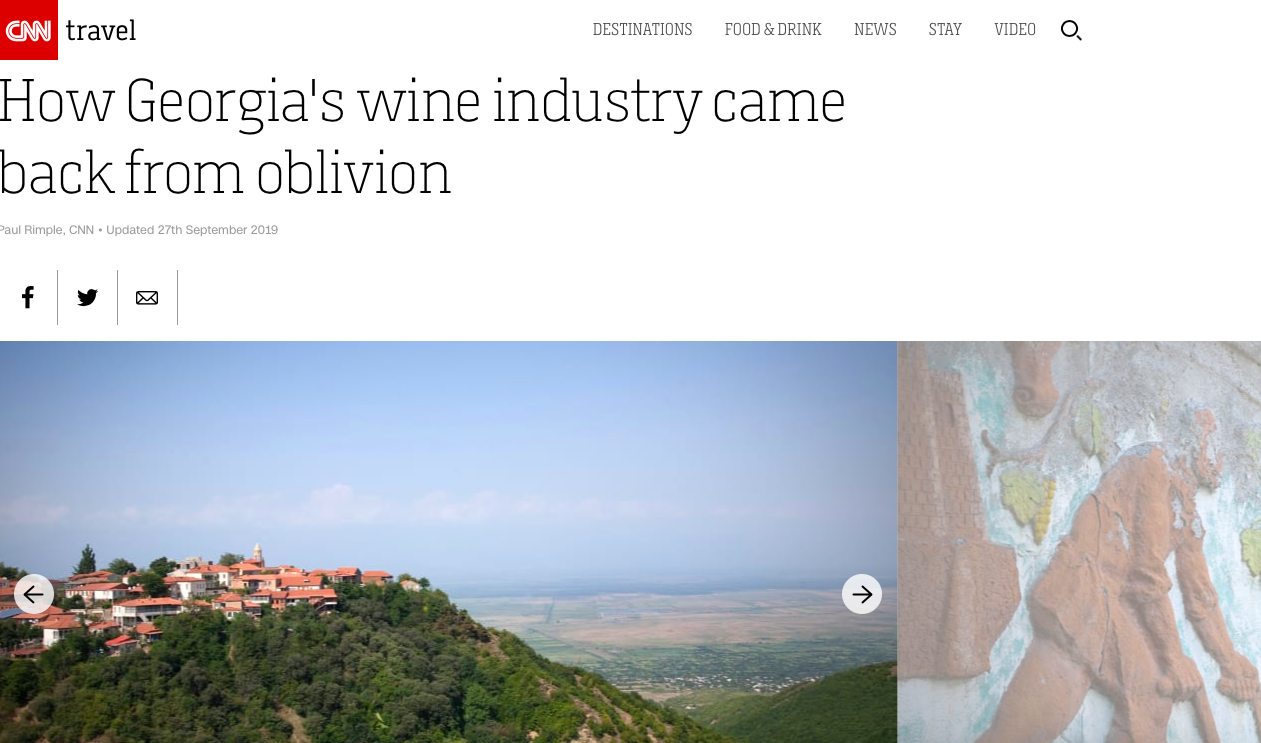
(CNN) — Six thousand years before Christ turned water into wine, the ancestors of modern-day Georgia were turning grapes into it. It's thanks to these imaginative Stone Age sapiens that today we enjoy Gamay from Beaujolais, Chianti from Tuscany, Rioja from Navarro and Cabernet Sauvignon everywhere from France to New Zealand.
Varietals from the birthplace of wine, however, have remained largely unknown to Western palates -- until now.
Today, Georgian wine is recovering from nearly 100 years of isolation and destruction by a system that industrialized viniculture and institutionalized the practice of making bad wine. The small country -- about the size of West Virginia -- was the chief provider of wine to the entire USSR.
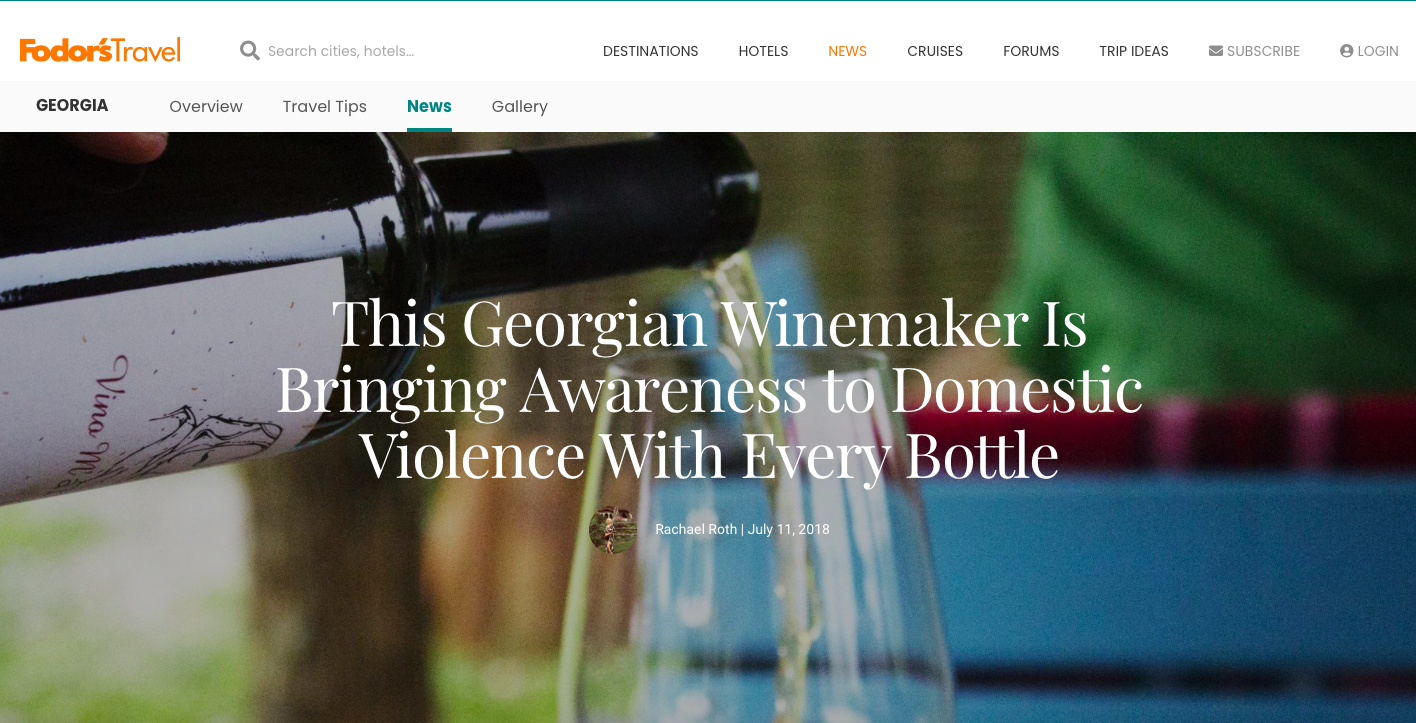
In a family-owned winery in western Georgia, Keto Ninidze fights stereotypes with her wine.
Inside the wine cellar of Keto Ninidze, literary critic, journalist, and former choir singer, are just four qvevri (egg-shaped clay casks used for wine fermentation), in the same place her husband’s grandmother made wine. Dresses hang from the wooden beams, including the dress Keto’s mother wore when she was born, establishing the winery as a feminine space.
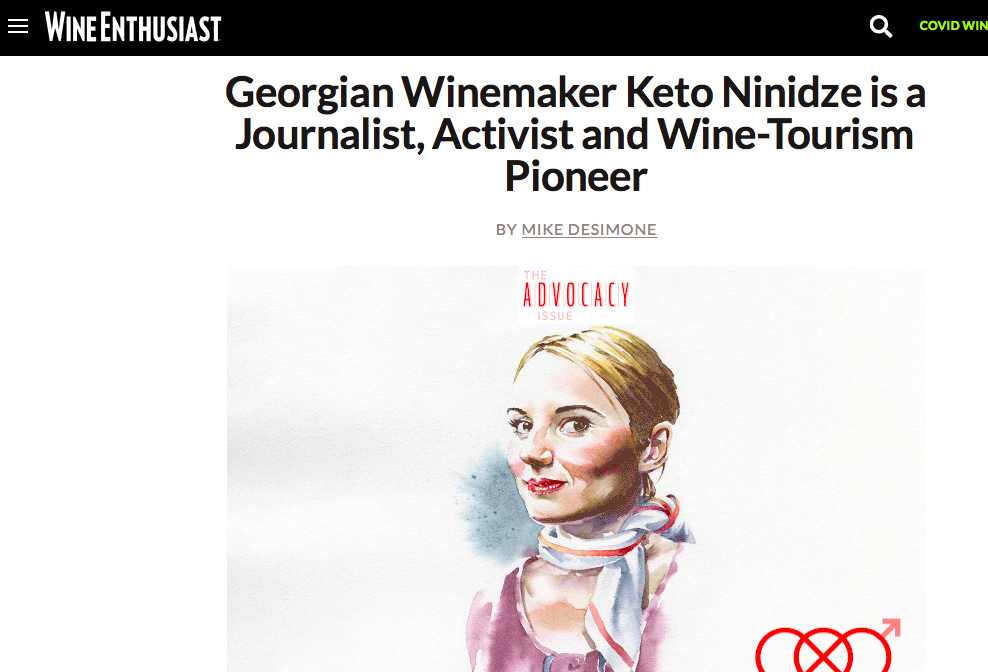
One of the world’s oldest winemaking countries, Georgia rests heavily on tradition. It’s customary for men to make wine and for their wives to pour and serve food without even being introduced. But Keto Ninidze has made her mark on the wine industry here, as well as in the greater wine world.
Beyond breaking boundaries by simply producing wine, she brings attention to women and domestic violence through controversial wine labels that feature images of naked women. A former journalist, she co-authored the book A Gently Fermenting Revolution: Women in the Georgian Wine Business and has been a pioneer for wine tourism to Georgia’s Samegrelo region.
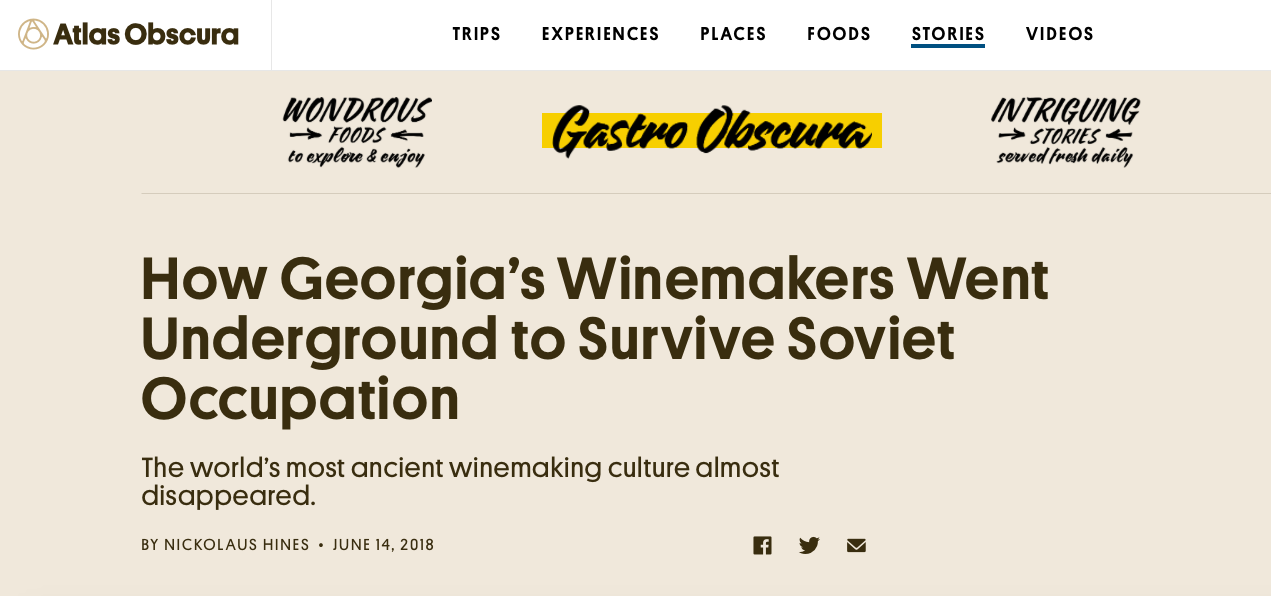
WHEN ILLIA KIKNAVELIDZE MADE WINE in the Republic of Georgia, he had to lower his entire body into human-sized clay pots, called qvevri, that were buried underground. Using the rough bark of a cherry tree, he would scrape the inside of each egg-shaped pot by hand, removing every bit of grape skin and bacteria from the previous batch. Every inch had to be immaculately scrubbed to keep the next round from spoiling. Then, he would fill his qvevri with juice from local grapes, cover it, and let nature do the rest, just like local winemakers had been doing for some 8,000 years.
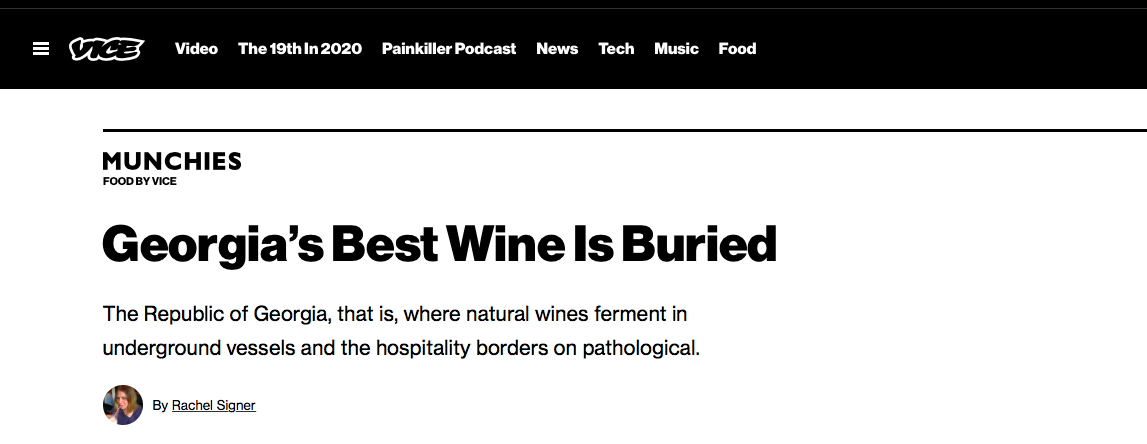
In the Republic of Georgia, every meal is a feast. The entire family, from grandmother to grandchildren, will spend days preparing a meal when people are visiting. I learned this firsthand when I recently traveled the country with a small army of natural winemakers, importers, sommeliers, and chefs from the all over Australia, the US, and Europe during a week of intense eating and drinking.
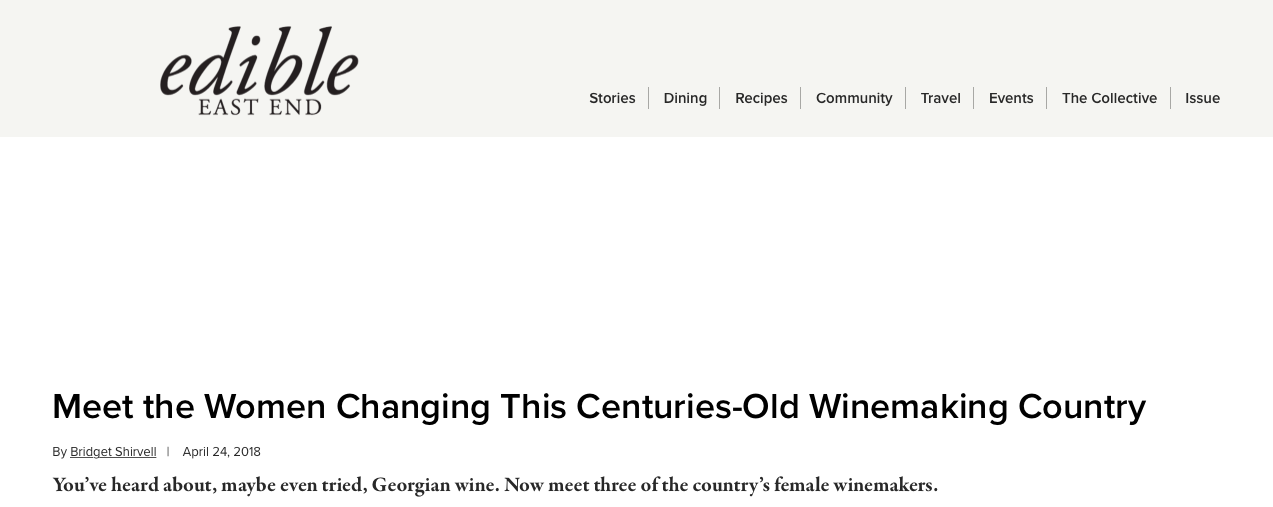
Dust flies up all around as the van comes to a stop at the edge of a narrow dirt lane. Impassable for the auto, a stone wall rises up from the end of the road where a wrought iron gate stands open, seemingly begging me to venture down the path and into one of Georgia’s many wineries.
Say the word Georgia and chances are it’s the southern U.S. state that first comes to mind, but thousands of miles away at the intersection of Europe and Asia, the country of Georgia is a magical place to visit, one that is emerging as a wine power likely to soon top lists of must-visit wine destinations.

We used to spend a lot of time in western Georgia’s Samegrelo region when breakaway Abkhazia was our beat. Zugdidi, the regional capital, was our overnight stop coming and going across the river to the disputed land in the north. Our local friends would welcome us with Megrelian hospitality, decorating their tables with hearty and spicy local fare that made us purr. The wine, however, with its sweet barnyard vinegary tang, was a different story.
We assumed that this subtropic-like land, with its year-round lushness and mandarin, hazelnut and overgrown tea fields, was hostile to good wine grapes. We didn’t realize back then that the practice of making sugar-wine was not exclusively a Megrelian thing, but a Communist legacy practiced throughout the country. In fact, the Soviets had a wine factory in Samegrelo that cranked out lousy semi-sweet wine from otherwise divine local grapes. There was a lot we didn’t know.
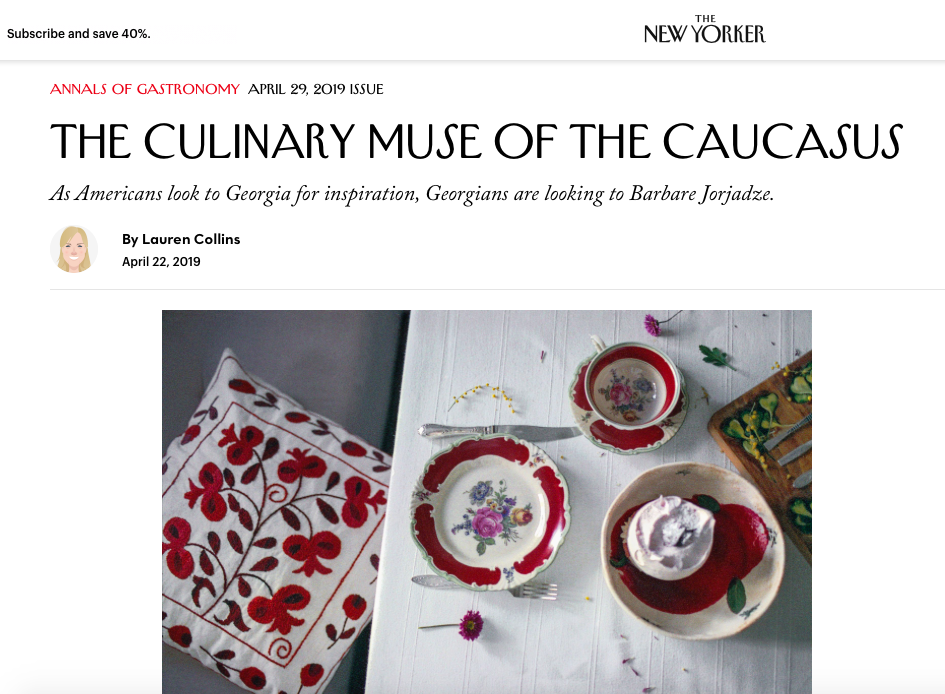
I distinctly remember the first time I had sushi: September 11, 1998. I was a college freshman, newly arrived on campus after a three-night hiking trip that the university had organized as an orientation activity. Since the dining halls weren’t open yet, the trip leader walked us into town, to a restaurant called Ichiban. When we got there, I ordered last: a California roll, like everyone else. I was nervous about eating it, but I was hungry, having spent half a week subsisting on handfuls of gorp. The roll was great. Over the next year, I went to Ichiban whenever I had the chance. Later, I switched to Sakura Express, a nearby competitor. It had a salad bar that came free with your meal, which turned me into a fan of daikon radishes.
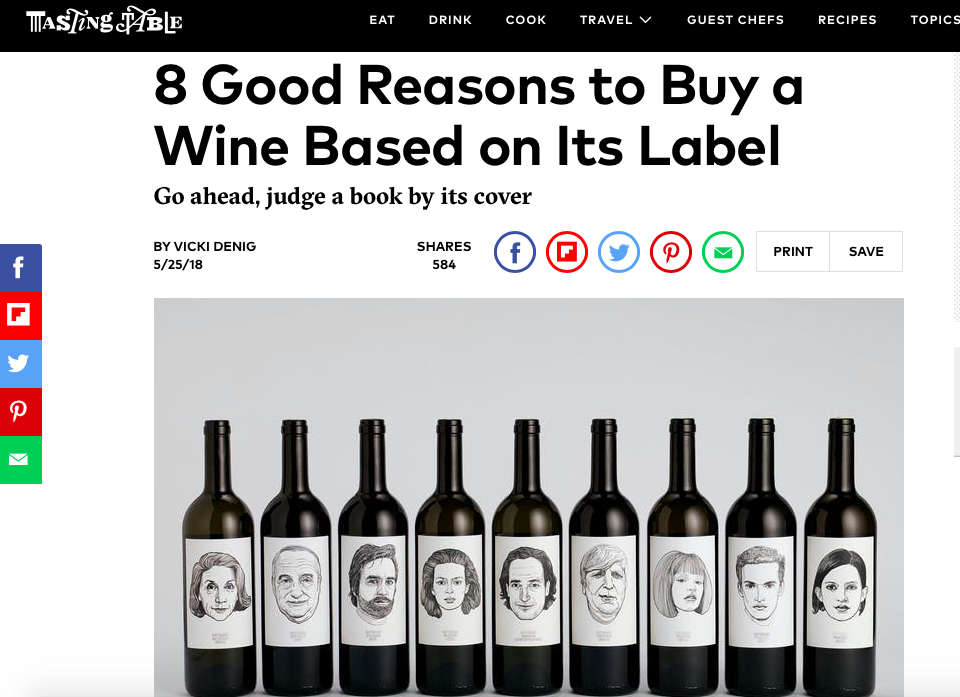
People warn against buying a bottle of wine based on its looks, but some beautiful labels were designed to tell a story—not just show off. The juice behind the art is definitely the most important part, but aside from providing essential information about a wine, unique labels can have more of a story behind them than you think. Here, we round up a list of eye-catching labels (on bottles containing wine good enough to back them up) and reveal the stories behind the stickers.
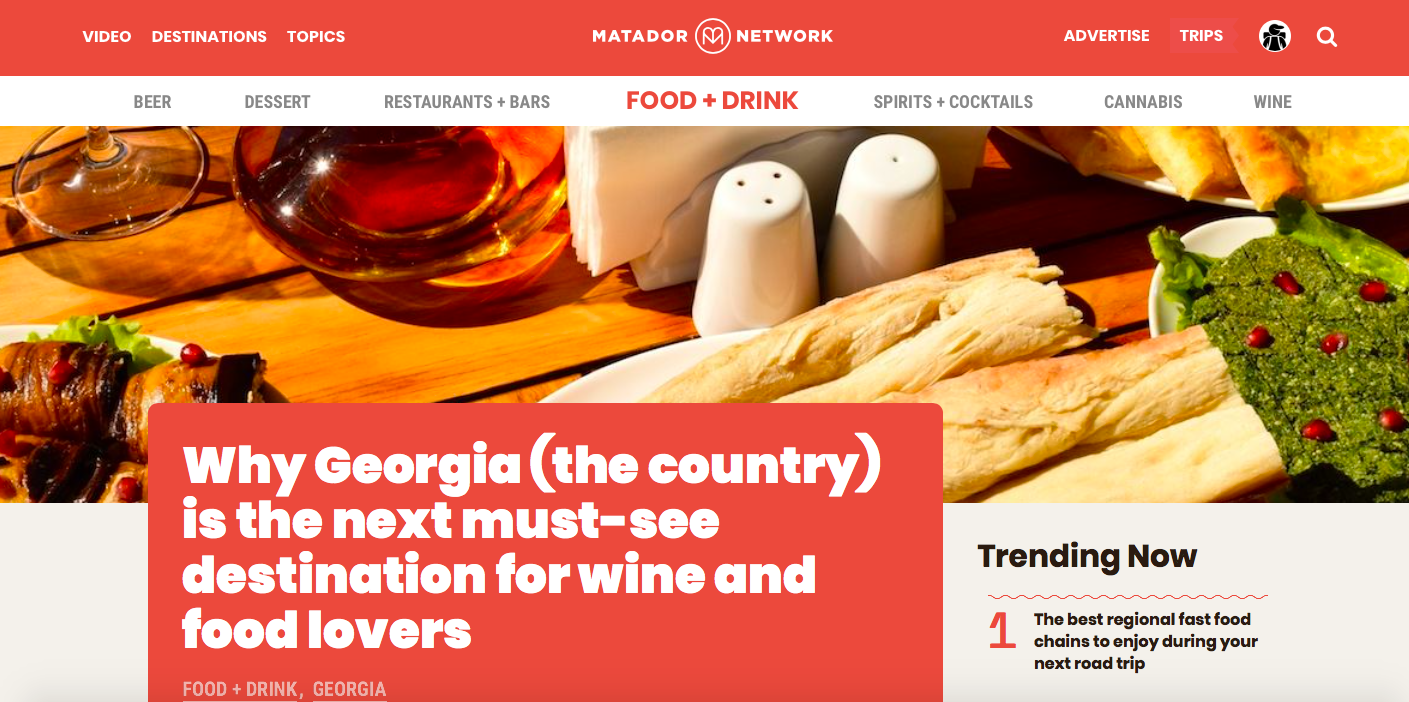
WHEN WE SAY that Georgia may be the most underrated food and drink destination in the world, we’re not talking about peaches and sweet tea. At the intersection of Europe and Asia lies Georgia — the country — one of the most culturally rich, diverse nations in all of Eastern Europe.
Although it’s small in size, Georgia has a rich and extensive history, with layers of occupation, war, and fights for independence woven in between. After hundreds of years of Russian occupation, the former Soviet republic finally declared its independence in 1991, electing its first president on May 26 that same year. Beyond its modern history, Georgia is rich in antiquity, much of which is still readily available for travelers to see. Traditional song, stunning architecture, and outdoor adventures in the Caucasus Mountains and Black Sea abound, but the real draw for travelers in-the-know today is the food and drink.

In the beginning, all the people of Earth lined up as God divvied up the land. The French got France, the Japanese Japan, the Brazilians Brazil. One group, however, was not paying attention at all and didn't get in line.
Instead, they were marveling at simply being alive, with so many others, and all of these strange and wonderful foods. There were tangy grapes to turn into wines, red grains to bake into breads and rich walnuts and sour plums to crush into sauces. All the while they talked and laughed and sang.
Suddenly, no one else was around; no land would be theirs. Troubled, they ran to God but God could only shrug. "Sorry, I've given everything away." But the people begged and God relented. "Well," God sighed, "I had saved a place just for me, but you can have it." And that became the Republic of Georgia.
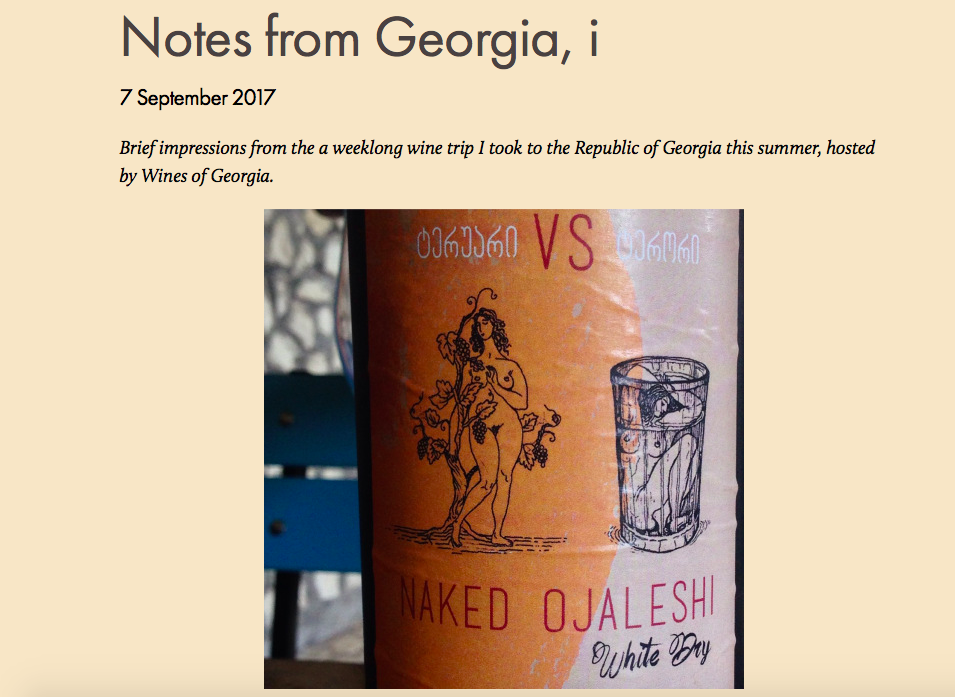
Pictured: Keto Ninidze’s first wine. Keto’s a university-trained philologist, social activist & wine writer, one of Georgia’s very few female winemakers, and she moved out west from the capital just last year to Martvili, in Samegrelo. There are a lot of hazelnuts here—it’s a cash crop—and the soils are predominately limestone. Her husband Zaza works with the national parks service (I am paraphrasing—I don’t know the official name, but it’s involved with natural wonders & attractions in the area like the Martvili canyon) and also makes wines under his own label.
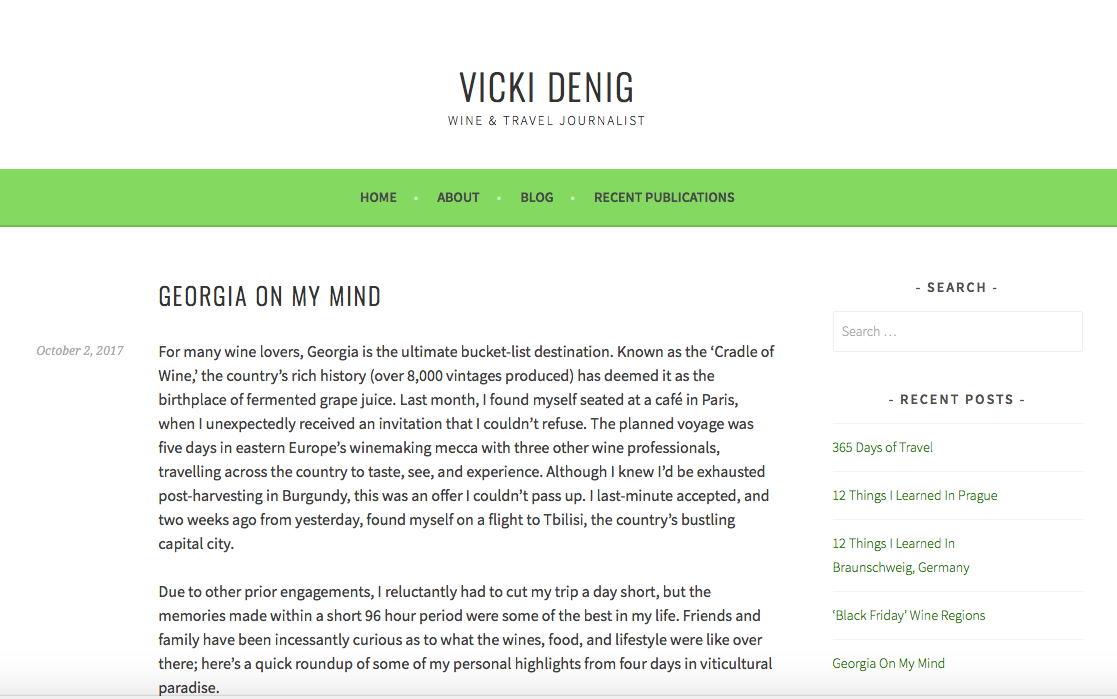
For many wine lovers, Georgia is the ultimate bucket-list destination. Known as the ‘Cradle of Wine,’ the country’s rich history (over 8,000 vintages produced) has deemed it as the birthplace of fermented grape juice. Last month, I found myself seated at a café in Paris, when I unexpectedly received an invitation that I couldn’t refuse. The planned voyage was five days in eastern Europe’s winemaking mecca with three other wine professionals, travelling across the country to taste, see, and experience. Although I knew I’d be exhausted post-harvesting in Burgundy, this was an offer I couldn’t pass up. I last-minute accepted, and two weeks ago from yesterday, found myself on a flight to Tbilisi, the country’s bustling capital city.
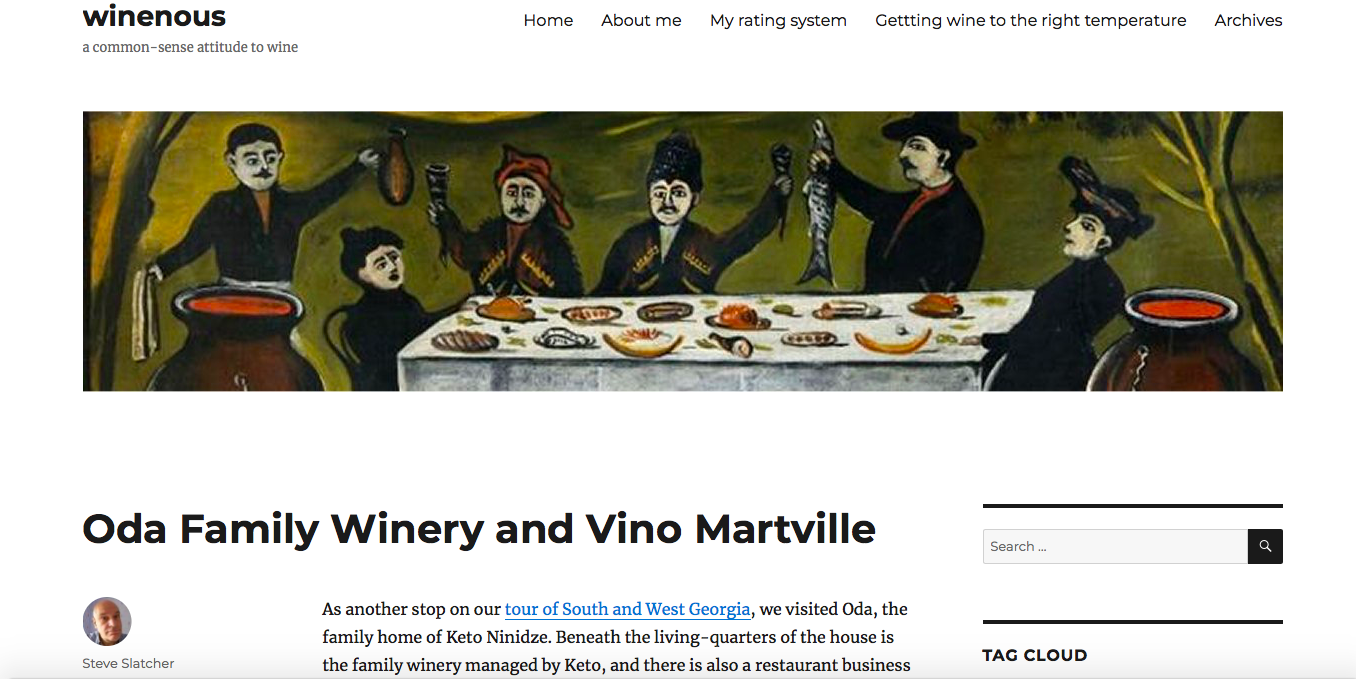
As another stop on our tour of South and West Georgia, we visited Oda, the family home of Keto Ninidze. Beneath the living-quarters of the house is the family winery managed by Keto, and there is also a restaurant business there. The restaurant is where we had lunch, except we were the only guests at the time, and Keto stayed with us at the table after showing us around her cellar and vineyards. So where does Vino Martville come into the picture? Well, Keto is married to Zaza Gagua who is a partner in that winery. (It is sometimes styled as M’artville with the “art” bit in another font and/or colour, I shall stick with Martville!) Vino Martville is currently better established than Oda Family Winery, so you are more likely to have heard of it, and the wines drank with lunch were Vino Martville.
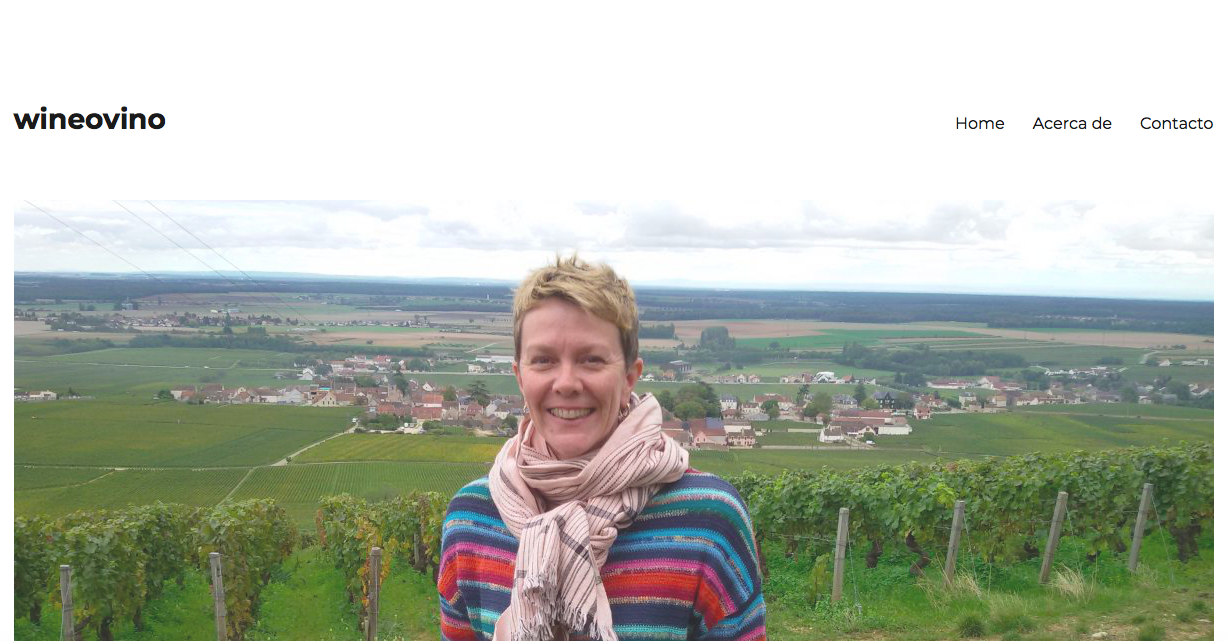
I went to Georgia primarily to experience amber wines made in traditional Georgian qvevri (sometimes spelt kvevri and both pronounced /kwevri/). These are handmade, fired clay pots of anything between about 150 and over 2,000 litres which are buried up to their necks in the ground, usually in a roofed winery building, however humble, but sometimes outside under an open sided roof, or simply under the stars. My interest was – is – in amber wines (sometimes called orange wines but in Georgia referred to as amber; personally I prefer the term amber too), which are wines made from white grapes but vinified in the same way as red wines; by fermenting the grapes on their skins and then keeping the wine on the skins for up to 6 months after fermentation has completed. Production is generally from organic worked vineyards although generally not certified, but without use of pesticides and herbicides, and in the winery wild yeasts, no inoculation for either alcoholic or malolactic fermentation and no (or very little use of) sulfur. The resulting wines have lots of tannic structure and autumnal fruit and spice flavour profiles, with honey and nuts.
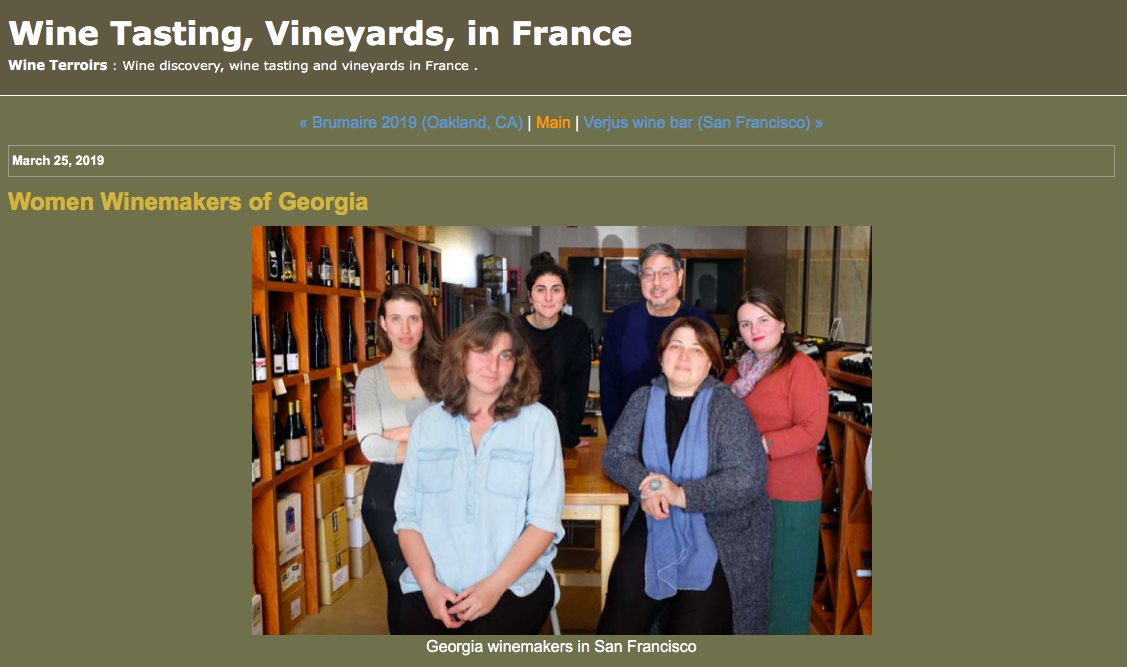
All these women winemakers from Georgia were also pouring their wines at Brumaire and if my carelessness in managing my time made that I missed them there, at least i could correct this misstep the following day thanks to a private tasting organized by Alex in his Vineyard Gate wine shop in Milbrae in South San Francisco. The wine shop which was closed that day (monday) is just a couple of minutes on foot from the BART station. The man who helped these winemakers attend was there too, Chris Terrell, he is the importer at New York-based Terrell Wines. Like the linked article implies, if you had a Georgian wine in New York, there's a good chance it came in through Chris Terrell who imports 22 family wineries from Georgia. I learnt something interesting also in this linked article, Chris first discovered Georgia by cycling through the country in 2004, this was before he was dealing with wine; we have something in common (I also cycled through eastern and western Europe and the U.S.).
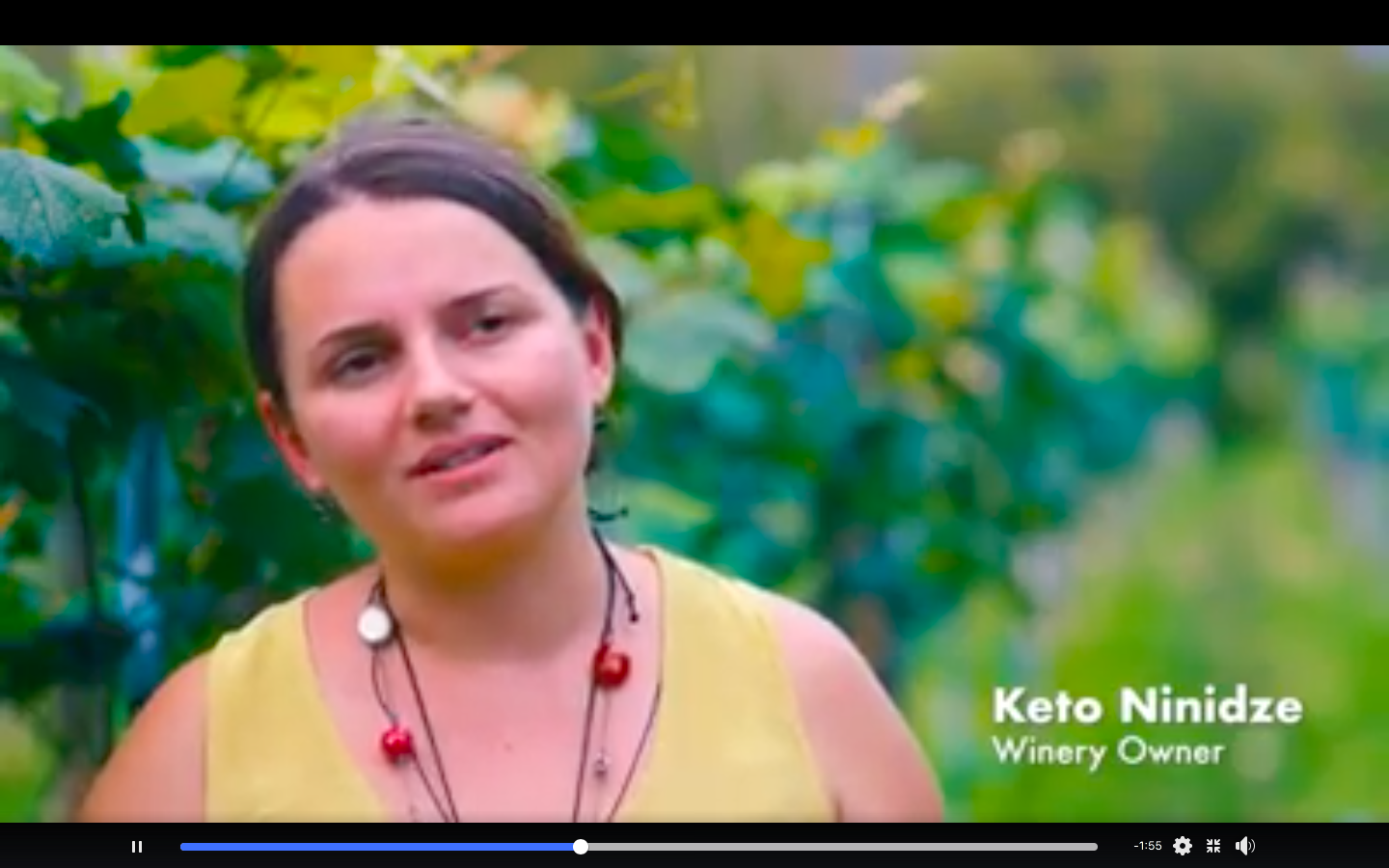
GLP Films. Georgia - Feast of Sences
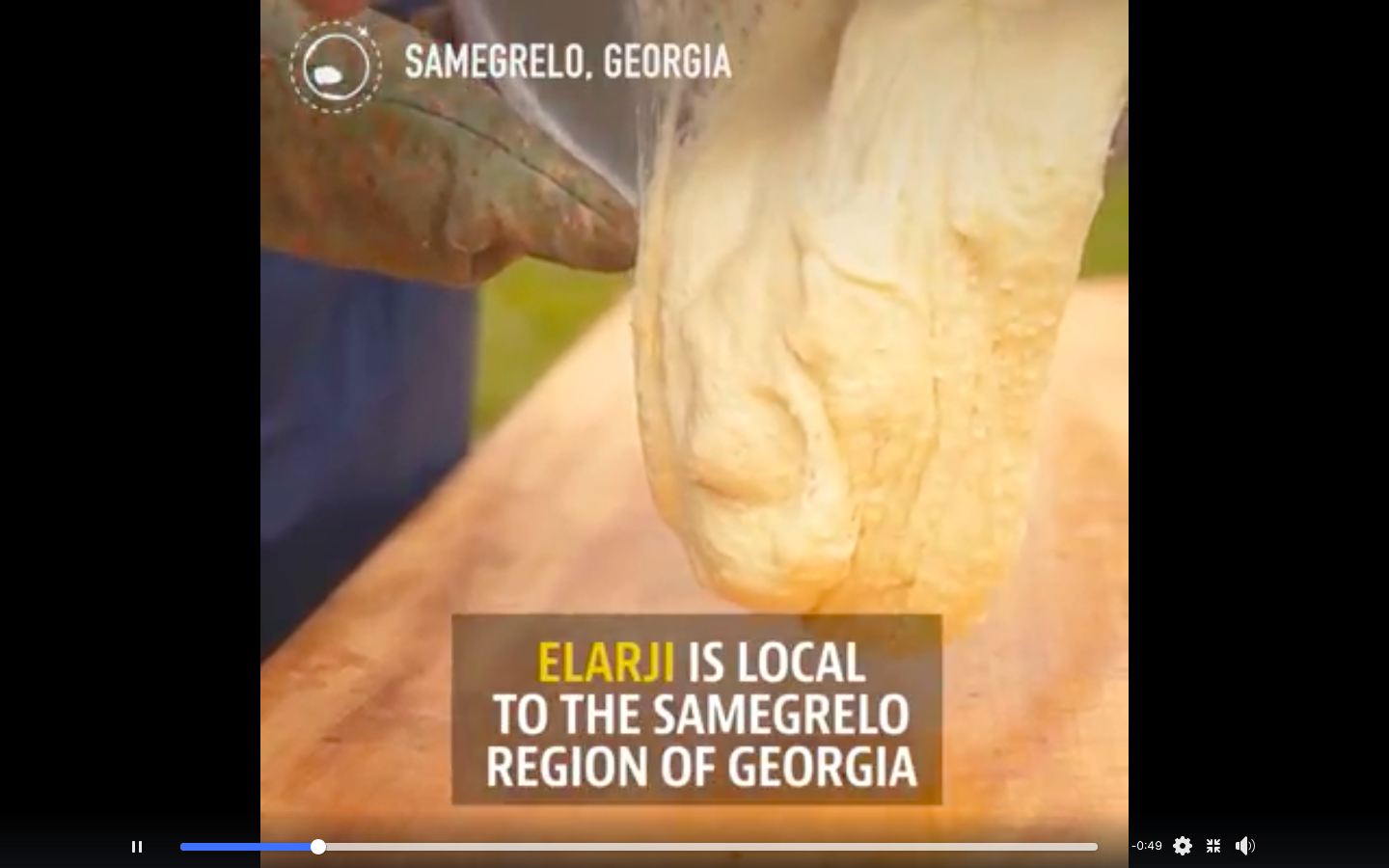
Tastemade Travel. World's cheesiest dish in Georgia
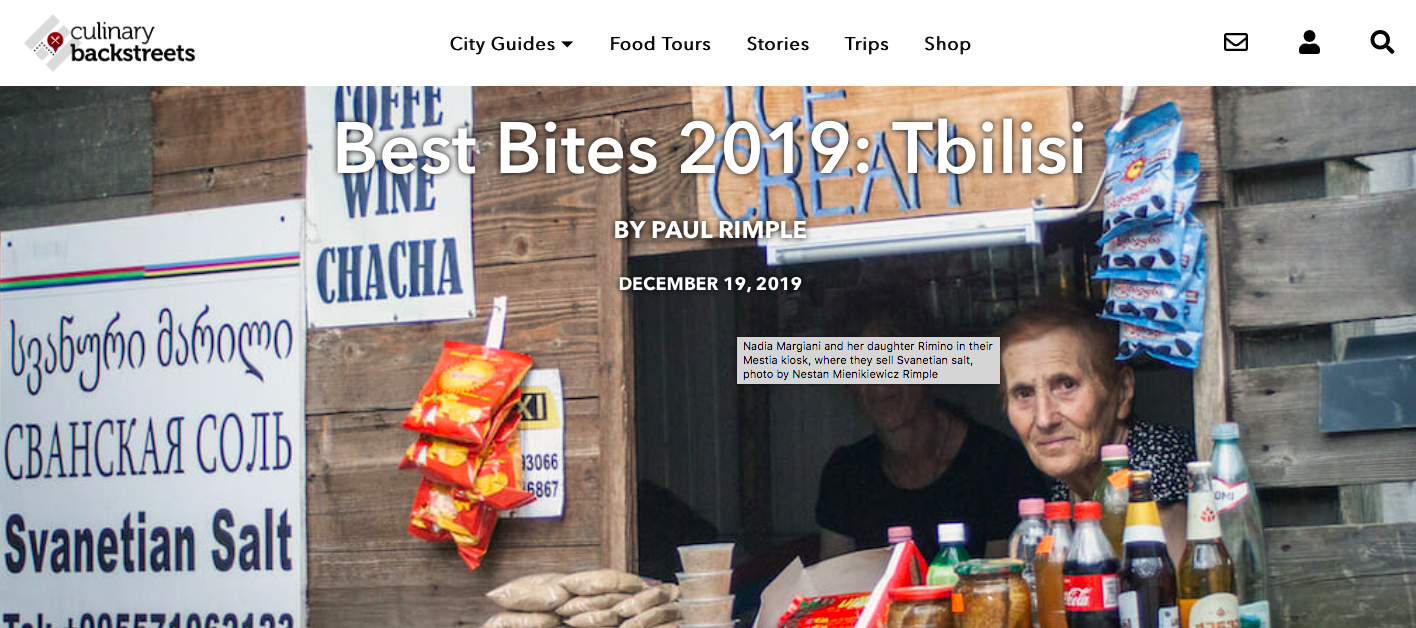
2019 was a good year for prying ourselves out of our Tbilisi comfort zone, filling the tank and getting out of town. For us it is a way to connect to the captivating earthy genuineness that prompted us to move here, but this year we wanted to meet some of the people who have become part of what we call a “return to the village” trend.
On one trip to Kakheti last winter, we visited Sopo Gorgadze and Levan (Leo) Tsaguria, a Tbilisi couple who left the city to resume new lives as farmers in the village of Shalauri. Kicking back in their living room looking at the Caucasus Mountains stretching across the Alazani Valley, we learned how they became cheesemakers more by coincidence than by design. Then Sopo set down a board with artisan goat and cow’s milk cheese that straightened us right up. Nobody in Georgia makes cheese this delectable. MarletaCheese, which is named after their first cow, can be found in several Tbilisi restaurants, wine bars and specialty shops. Sopo also teaches cooking and hosts private dinners, which feature her award-winning cooking, by appointment at their home, providing a refreshing touch of sophistication to Kakheti’s developing food scene. “We are starting a new cheese tradition in Georgia,” Sopo said.
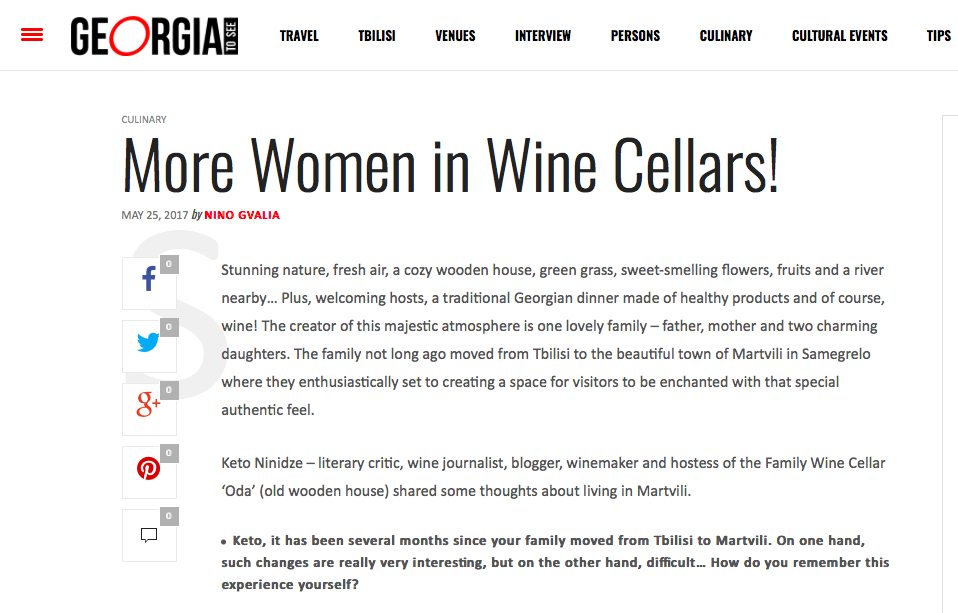
Stunning nature, fresh air, a cozy wooden house, green grass, sweet-smelling flowers, fruits and a river nearby… Plus, welcoming hosts, a traditional Georgian dinner made of healthy products and of course, wine! The creator of this majestic atmosphere is one lovely family – father, mother and two charming daughters. The family not long ago moved from Tbilisi to the beautiful town of Martvili in Samegrelo where they enthusiastically set to creating a space for visitors to be enchanted with that special authentic feel.
Keto Ninidze – literary critic, wine journalist, blogger, winemaker and hostess of the Family Wine Cellar ‘Oda’ (old wooden house) shared some thoughts about living in Martvili.
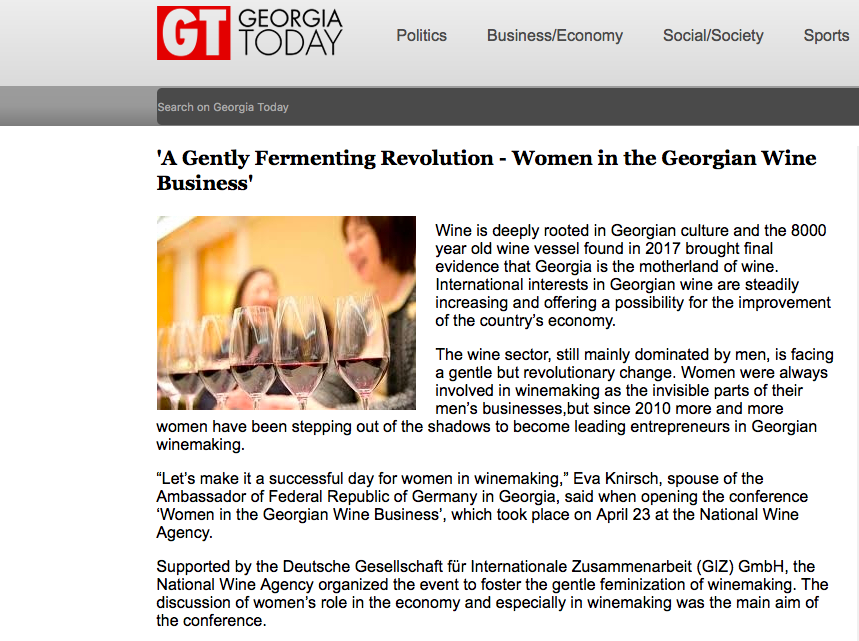
Wine is deeply rooted in Georgian culture and the 8000 year old wine vessel found in 2017 brought final evidence that Georgia is the motherland of wine. International interests in Georgian wine are steadily increasing and offering a possibility for the improvement of the country’s economy.
The wine sector, still mainly dominated by men, is facing a gentle but revolutionary change. Women were always involved in winemaking as the invisible parts of their men’s businesses,but since 2010 more and more women have been stepping out of the shadows to become leading entrepreneurs in Georgian winemaking.
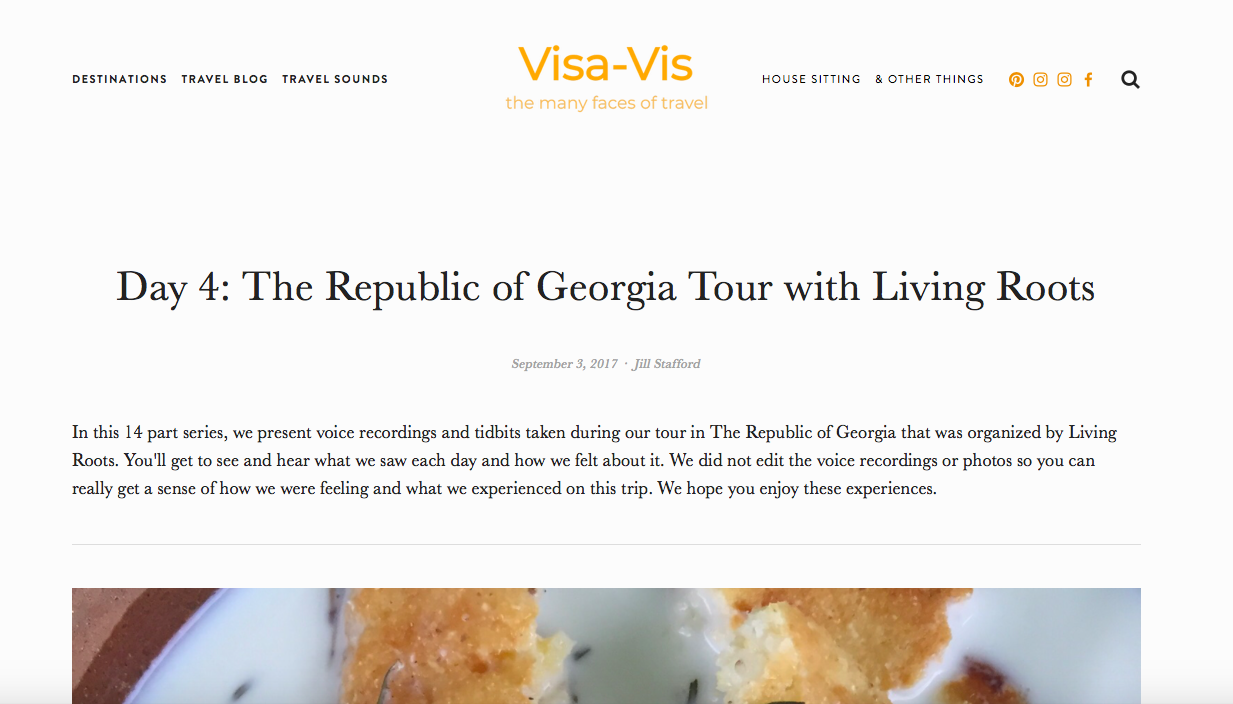
In this 14 part series, we present voice recordings and tidbits taken during our tour in The Republic of Georgia that was organized by Living Roots. You'll get to see and hear what we saw each day and how we felt about it. We did not edit the voice recordings or photos so you can really get a sense of how we were feeling and what we experienced on this trip. We hope you enjoy these experiences.
On our fourth day of our tour of Georgia we had an incredibly long day of driving but saw some amazing things, ate more incredible food, drank delicious wines and visited another church. There are some remains of Soviet mosaics and carvings throughout Georgia and we have been trying to see as many as we can. Our day started with a driving tour of Kutaisi where we saw an incredible example of a Soviet era relief. Then on to the gorgeous, awe inspiring Gelati monastery. The frescoes and architecture of the churches in Georgia have been blowing our minds. These are some of the most serene churches we have ever visited. There's a stillness and a simplicity to them that seems unique to Georgia. Our day continued with an incredible lunch and wine tasting with one of Georgia's only female winemakers. Did I say the food, wine and company were incredible? Well, if I didn't, believe me when I say I felt truly grateful to be at Oda Family Winery on this day. We continued on to our guest house and ran into some of the thickest and scariest fog I have ever been in. Shota did an amazing job not driving off the harrowing road when the fog was preventing us from seeing beyond the front of the car. We eventually made it to our guest house in Svaneti where we dined on some more incredible food. Hear all about it below.

Kraj winem płynący. Kraj kontrastów. Kraj dotknięty wojną, ale pełen życzliwych ludzi. Kraj pięknych i mających kilkaset, a nawet tysiące lat zabytków. Kraj niesamowitych krajobrazów. Kraj, który ma i piękne wybrzeże, jak i imponujące góry. Jednym słowem - Gruzja.
